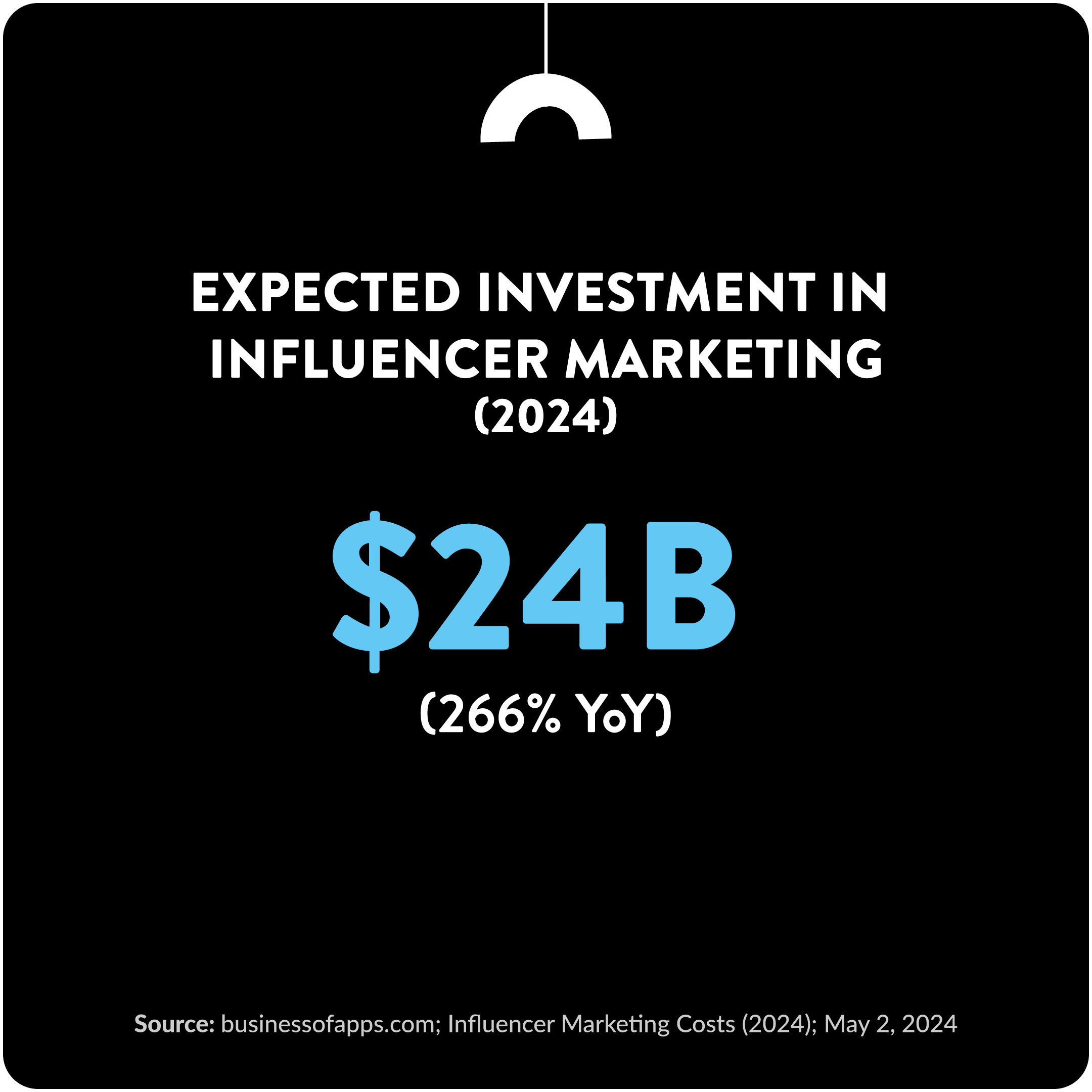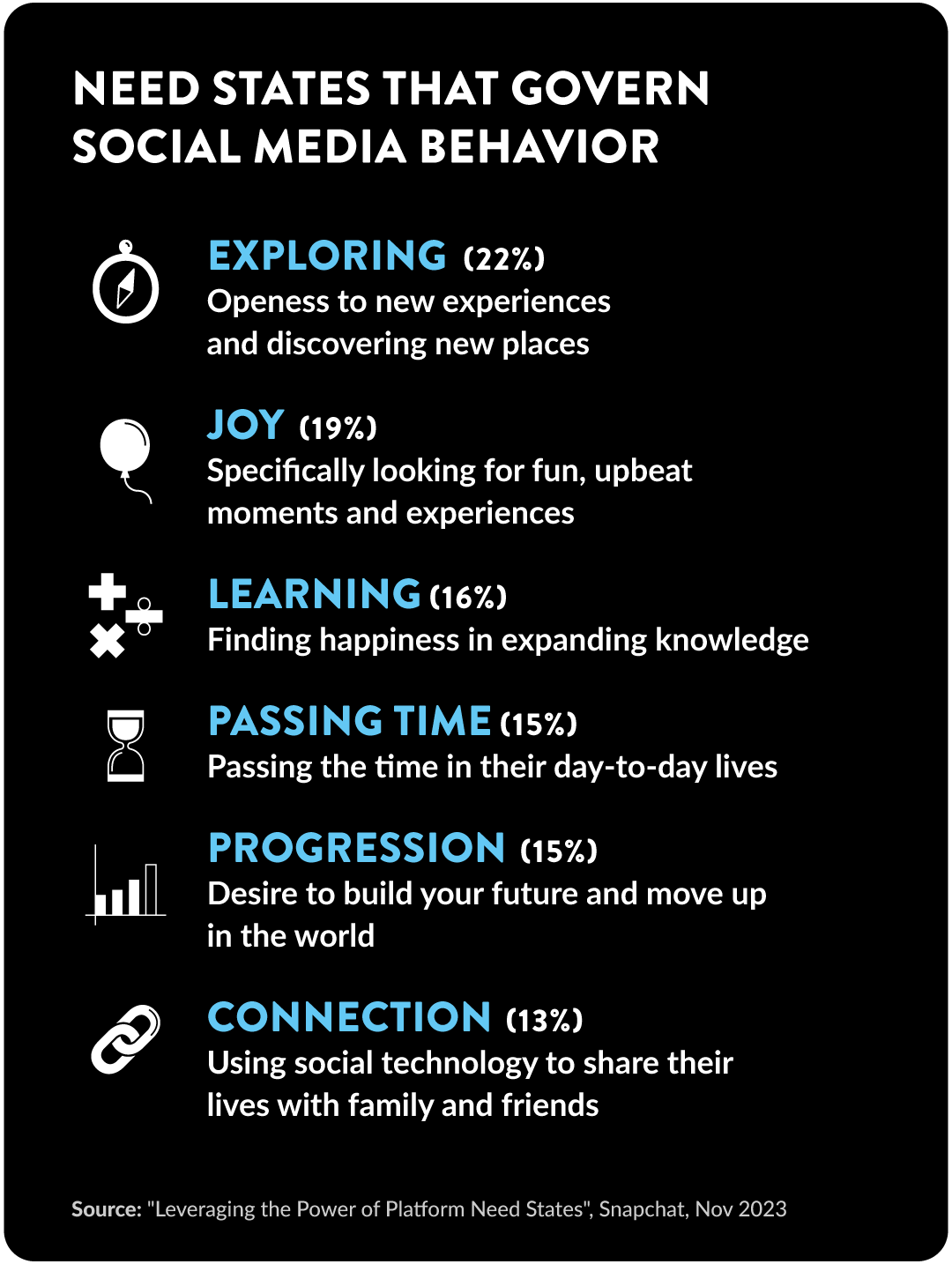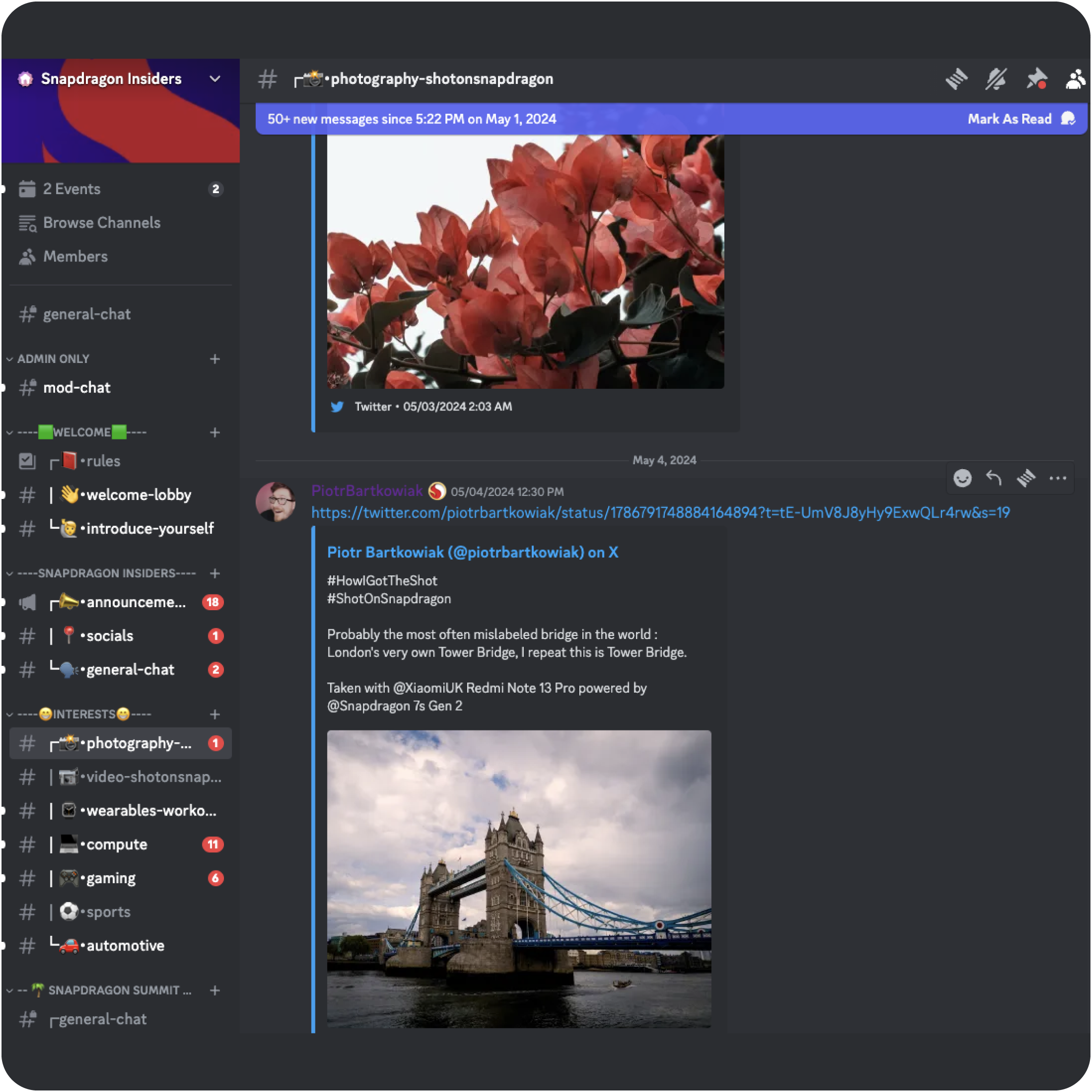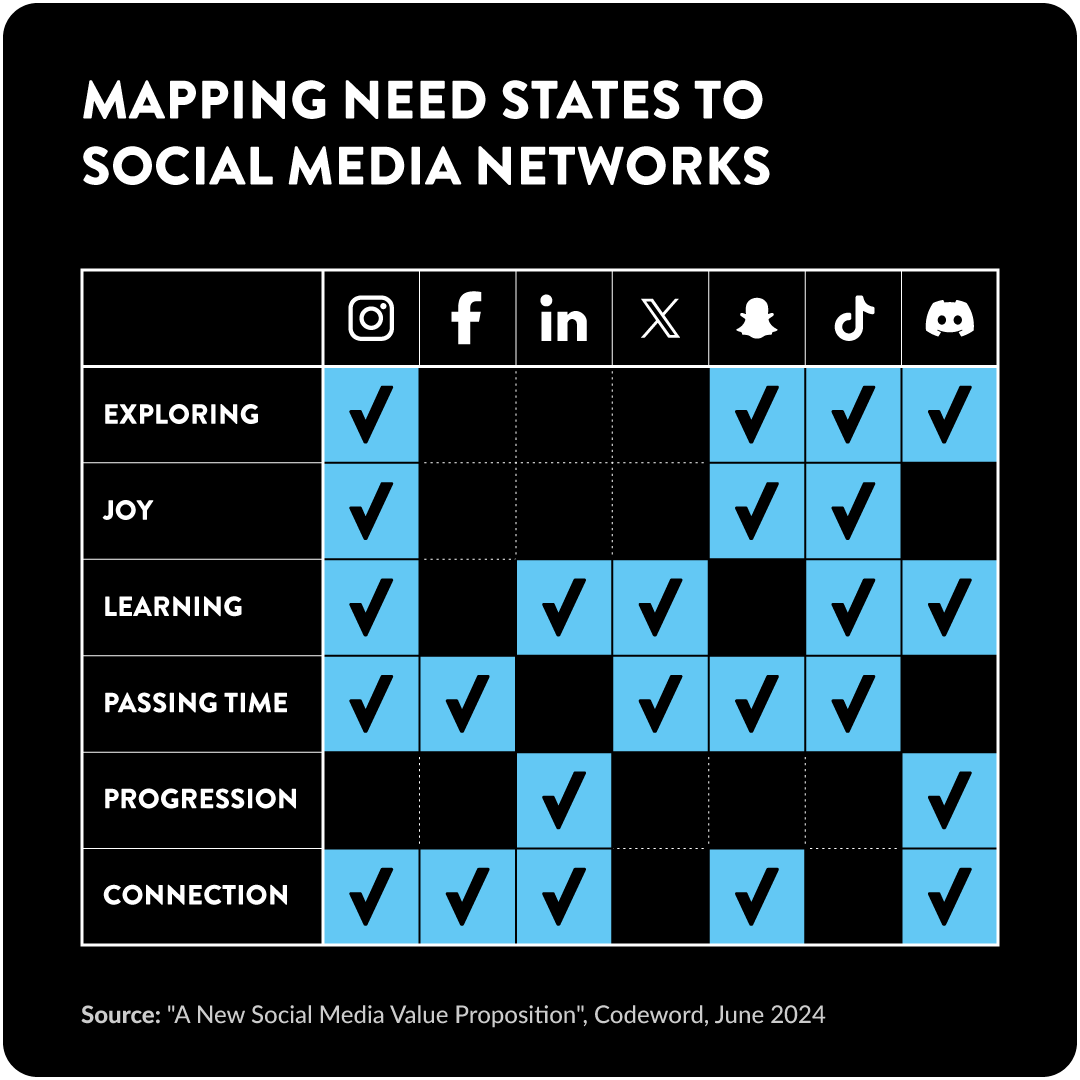In his book Read Write Own, Chris Dixon surveys the big social media networks as corporate networks following a familiar “attract-and-extract” playbook: Lower the barrier for anyone who wants to publish on the platform (including brands), attract the audiences, build the content and consumption cycles, and as you approach a saturation point, start squeezing the shit out of the lemon.
Anyone tasked with overseeing a brand’s social media presence these days understands we’re in the “extract” phase of big social. Big social is incentivized to bury organic content from brands in particular because it’s some of the least engaged content on the platforms, and they’d rather brands pay to push their messages to audiences anyway. The old notion that big social is a place to amplify your messages without paying to do so is dead. Brands can occasionally break through with a viral moment or a humdinger of a post, but the platforms have a heavy thumb on the algorithmic scale.
If it wasn’t clear before, it’s now painfully clear that big social doesn’t represent “owned media.” You don’t own the audience, content, or data springing from your investment, and you certainly don’t control how the content reaches the audience. It could all vanish the minute the big social networks decide to make it so (or in the case of TikTok, change is forced upon them by a regulating body).
Influencers or bust?
If you’re just renting content, audiences, and data on big social, why invest in the networks at all? A possible answer is to treat them like any advertising environment where you know your target audience gathers–one that’s exponentially cheaper than any other advertising environment. Go in with clear advertising objectives and a campaign plan and just execute. Most of the big social media networks have pretty robust advertising solutions (surprise) you can optimize for awareness, engagement, conversion, and other steps of the user journey.
Then again, consumers hate ads. They’ve long learned how to ignore, block and merely tolerate them. That’s a big reason brands are doubling down on influencer marketing. Investment from marketers is expected to reach $24billion this year, up $9 billion from 2023. It’s paid media, but it’s acceptable paid media to users getting content from their favorite creators. Influencer marketing comes with its own set of caveats. A recent BoF survey found 65% are turning to fashion influencers less than they did a few years ago. Social media feeds are being not-so-gradually degraded with explicit ads and influencer posts, as the truly organic stuff is squeezed to the edges.

If you’re a brand looking at big social as an ongoing communications vehicle, subsisting solely on influencer engagements is probably untenable to you. Yes, organic reach has shrunk, but that’s an opportunity to actually improve the quality of content and audience engagement. You just need a different mentality than the “brands-as-publishers” credo that ruled the first half of the 2010s.
Finding a new social media value proposition
Most brands genuinely intend to provide audience value with their social media content but lapse into old content marketing habits like “educating” the audience on matters the audience isn’t asking to be educated on–certainly not on social media. That was always the flaw: “we’re providing education” was just a euphemism for pushing promotional messages about how awesome the brand is and hoping the audience followed a link back to the website (the one thing brands still own).
For all the aforementioned reasons, brands need a different playbook–one predicated on audience need states.
The need state strategy
Snapchat and Mindshare teamed up on a piece of research where they discovered social media behavior fell into six need states: exploring, joy, learning, passing time, progression, and connection. There are some nuances here (for example, I’d say “connection” can include more than friends and family, it can include peers or fellow hobbyists), but no major disagreements on how social media behavior is characterized –particularly for the behavior of those consuming content on social media networks, which is the vast majority of social media users.

It may not look this way, but a brand like Wendy’s is relentlessly focused on addressing need states on social media. It seems hellbent on joy and passing time as the need states their content should meet. It finds ceaseless inspiration in its own products to do so. That combo of relentless focus on need states, and ceaseless product-as-inspo powers scalable output that’s strategic. It’s not about being “funny” per se, it’s just about finding creative ways to hawk the product and meet a need state for the audience. Sesame Street–same. Eighty-percent of the content is just about putting a smile on an adult audience’s face, using Sesame Street’s brand assets and programming initiatives.
Qualcomm is balancing several need states with its Snapdragon Insiders program, which includes a Discord server, X account, and email digest. Let’s see if we can work out the strategy (disclosure: Codeword assists this program, so I’m cheating a little here).
Qualcomm figured out there’s a sizable group of enthusiasts who really care about the processors inside popular phones, PCs, and gaming devices. This audience understands the degree to which actualizing our coolest sci-fi dreams depends on computing power, so they like to keep tabs on the latest and greatest in chips like the Qualcomm Snapdragon processors.

Snapdragon Discord Photography Channel: A place for Snapdragon Insiders to share their photographs taken on Snapdragon devices.
It would be very easy for Qualcomm to take this enthusiasm for granted and assume anything they publish about the processors will “resonate” with this crowd. This is where a lot of brands stop (the education trap). Publish some tweets and newsletters about how great the product is and hope everyone remains interested.
Qualcomm’s job here is to understand why audiences care so much, and cater to that. What are these people yearning for in following chip processors? What are the need-states?
Is it learning? The audience simply wants to know the latest and greatest? That’s where a lot of brands would stop (the “education” trap). You don’t need a Discord server for that.
Is it connection? As any fan of… well, anything, will tell you, there’s salvation in showing up to engage with fellow fans. I just saw Belle and Sebastian live for the first time. You don’t put your arms around strangers and holler along to every song with them if you don’t share a palpable understanding of how great this thing you’re beholding is. The Snapdragon Insiders Discord has more in common with a concert than most brand communications. It’s filled with UGC from Snapdragon-powered devices. To keep going with the concert analogy, Snapdragon is the band, and the UGC is the song canon. The canon doesn’t belong to the band, it belongs to everyone who cares.
Connection doesn’t automatically equate to joy (as I can attest from any number of Reddit groups I’m in), but in this case it does. The discourse and UGC, almost entirely the self-governing product of the community, reflects people looking to indulge some positivity online, which we don’t always get.
I would argue the biggest need state Qualcomm is meeting is progression. It’s an “insider’s” program, after all. Yes, this group derives joy and connection from geeking out about the sheer computing power chip processors unlock, and it’s great Qualcomm is providing a space to do that. But if I consider why this audience cares so much about chips, I suspect it’s because they derive power from understanding computing power on a level many of us don’t. They are futurists. They can see where all these technological developments are leading, and that helps them feel more secure in their future. The Snapdragon Insiders program helps them mainline all of this knowledge inside of a community vehicle offering joy and connection, too.
Mapping need states to networks
Of course some social media networks innately serve some need states better than others. Think it’s fair to say LinkedIn serves our desire to move up in the world and secure a better future for ourselves. If your consumer is on LinkedIn in a meaningful way, the most frictionless, engaging way to add value is to meet their need to move up in the world. Really think about content you can build or program that, just by virtue of getting it in their feed, they feel like they’re moving on up, and at least you know you’re not detracting from the platform.
The fastest way to shake up a staid social media presence and perfectly flat, inoffensive content is to reach for the need state that seems the least likely fit for your brand and what you do.
“Consumers hire brands to do a job, essentially.” – Ben Witte, CEO of Recess
B2B brands tend to assume their audience is solely focused on “learning” from their brand, a saturated approach that usually serves the brand much better than it serves the audience. A B2B buyer is a human with different need states at different times, and they use social media networks differently to meet those needs.
A B2B brand inclined to address the learning or progression need state should consider, what would it look like to help users pass the time, or explore and discover new experiences? And on which social media network is the audience most likely to indulge those needs? That’s an exciting brief that opens new possibilities for serialized content, and all of them are strategic. Why? Because your competitors are still following the 2012 social media handbook. You’re creating a differentiated experience that genuinely meets a need for your consumers–even if it’s a surprising one.

The many strategic uses of social media
The fact that brands own nothing on social media networks adds urgency to extracting value from those networks. There’s nothing wrong with that. Brands are businesses in a relentlessly competitive, disruptive environment. Investing in organic social media is no different–they should define winning upfront.
“Engagement” feels like a very soft win, and always has. It’s a means to an end. What end? I’d argue Wendys and Sesame Street aren’t after engagement from an amorphous blob of people on X. They’ve determined a certain kind of adult on X could use more joy in their lives, and they use their brand assets (The voice of Elmo, pictures of the Baconator) to bring it. Doesn’t hurt that their brand assets have accrued a certain meaning and equity over time. The voice of Elmo or a picture of the Baconator takes on new dimensions through nostalgic associations–even if they’re borrowed nostalgic associations. The point is, Sesame Street and Wendy’s want to expose audiences to their assets and products so they occupy more space in the audience’s brains. That’s what every brand wants to do.
Mapping the assets and products to a clear need state is what makes it possible to court favorability and secondary impressions (through sharing, likes, word of mouth) that drive more reach for the brand without having to pay (not to mention make the algorithm happier, which has a compounding effect on that organic reach problem we mentioned at the top).
But this isn’t the only strategic use of social media networks. If you sell software, it might be hard to post pictures of it online, for example. Here are some other necessary, strategic use cases for mapping a brand’s needs to an audience’s need states:
- Creating a space for disparate, like-minded professionals to gather, commiserate, and learn from each other (need states: connection, progression, learning, exploring), and porting those learnings to your own products
- Exposing audiences to a cool use of technology, even if the tech isn’t that new or proprietary (need states: exploring, learning) and driving perception that you’re a creative, cutting-edge company. Some of the better content concerning AI does this well
- Serializing content for an audience that you know only they will find amusing (need state: passing time, maybe a little joy) and convincing them you’d be a great company to work for, or with.
Now is the time for brands to experiment and take some safe risks tinkering with the audience value of their content. It’s not about chasing trends, humor, or “educating audiences.” Nine times out of ten, it’s not. The best brands surprise us with how well they simply acknowledge and address our deeper emotional needs. It’s more attainable for your brand than you think.
